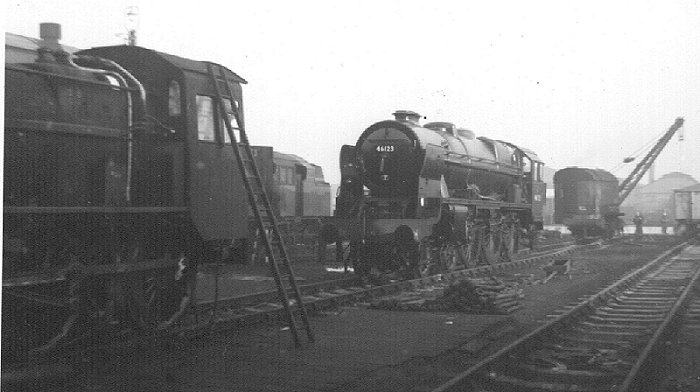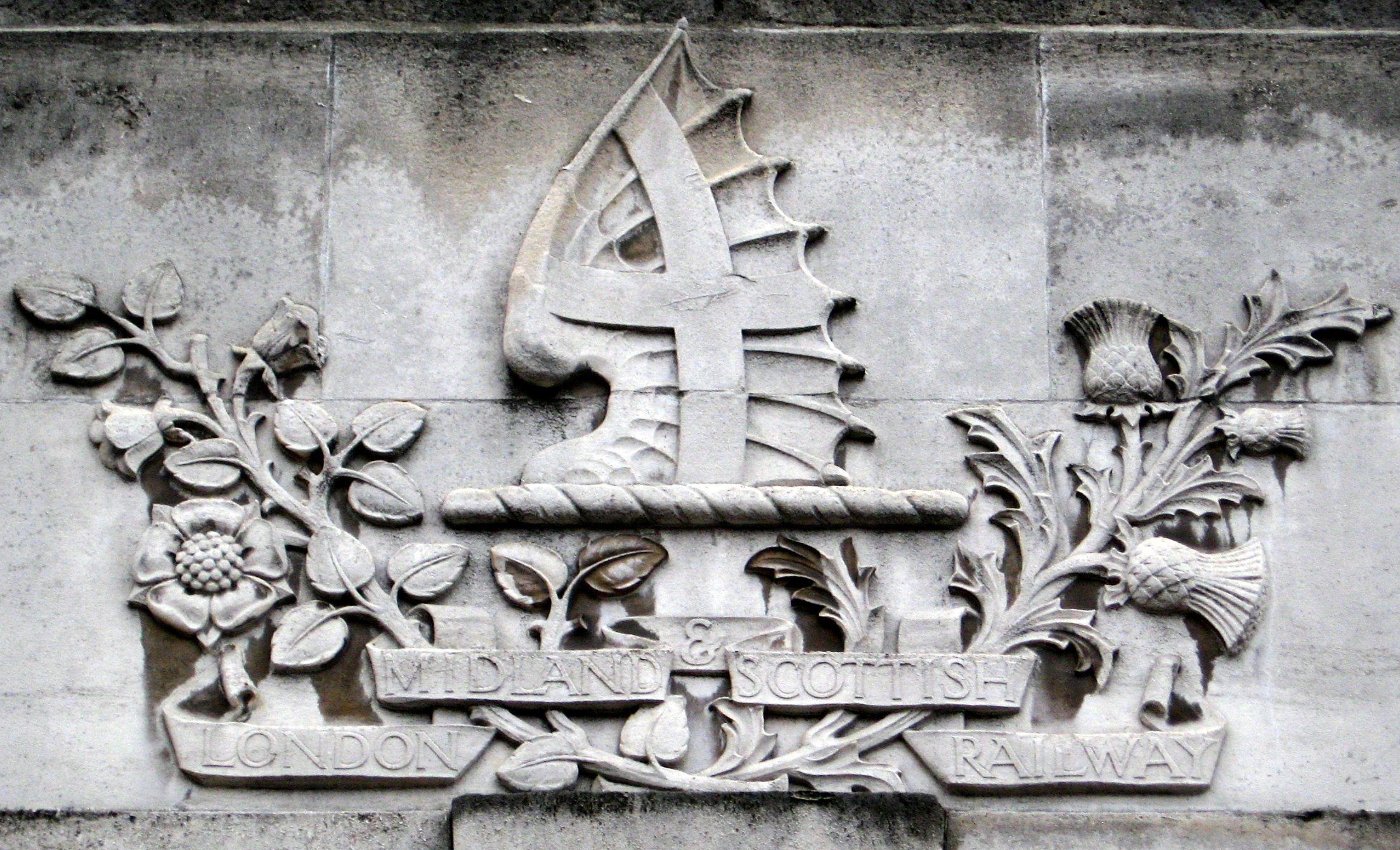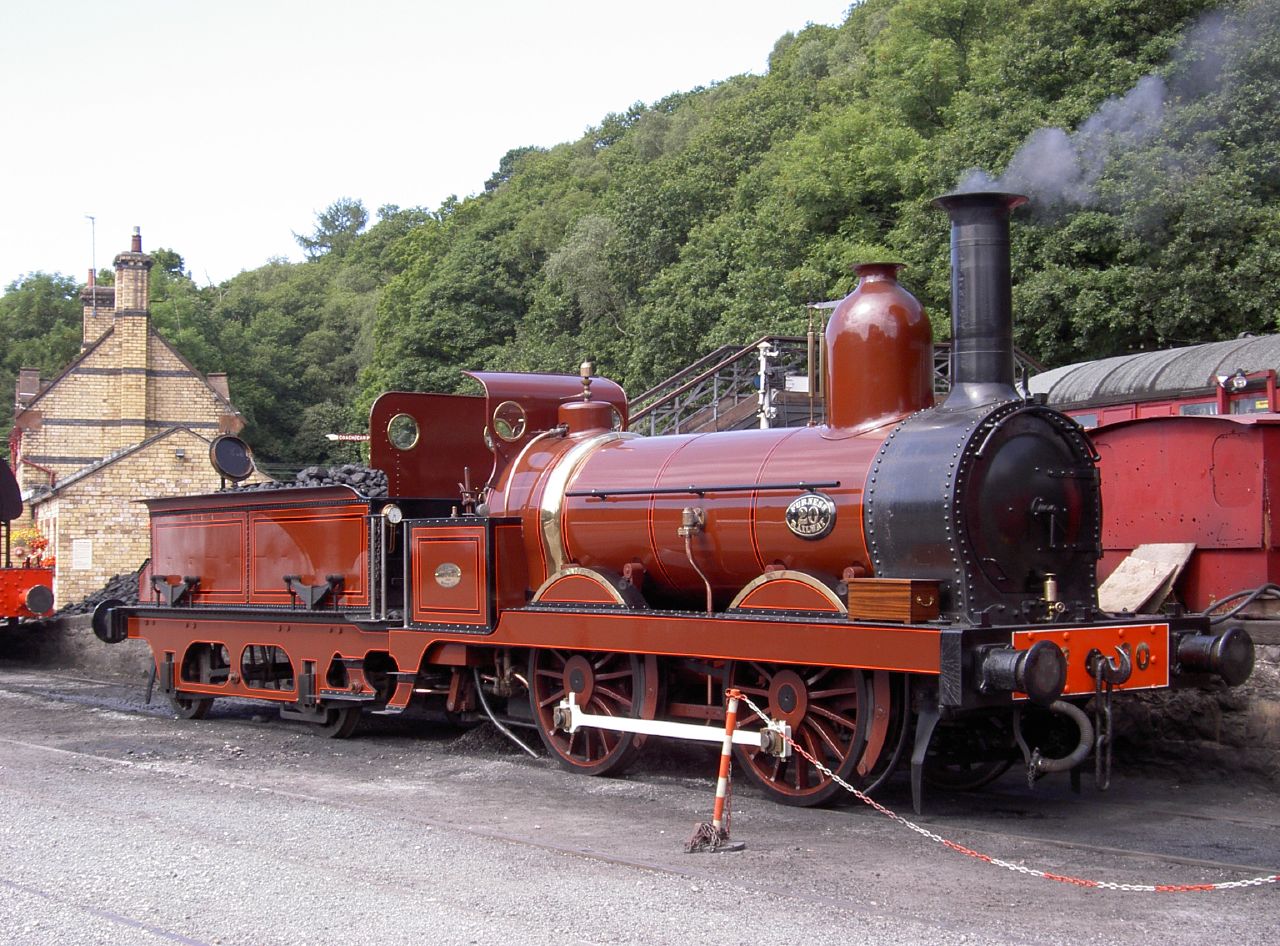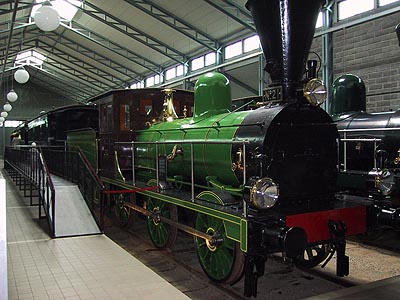|
Stoke Railway Works
Stoke railway works was set up in 1864 by the North Staffordshire Railway in the city of Stoke-on-Trent in the county of Staffordshire, England. The railway's first engines were supplied by a variety of outside manufacturers: Robert Stephenson and Company, Vulcan Foundry, Hudswell Clarke, Kitson and Company, Neilson and Company, as well as Sharp Brothers and Company who supplied six, including "Dragon" which opened the line in 1848. These were of the class known as "Little Sharpes". By 1864, the railway owned 64 locomotives. In 1868 the works was ready to build new machines, producing three 0-6-0 tank locomotives similar to a Hudswell Clarke design. New building finished when the LMS took over, and it closed in 1927, with the work transferring to Crewe Crewe () is a railway town and civil parish in the unitary authority of Cheshire East in Cheshire, England. The Crewe built-up area had a total population of 75,556 in 2011, which also covers parts of the adjacent civil p ... [...More Info...] [...Related Items...] OR: [Wikipedia] [Google] [Baidu] |
North Staffordshire Railway
The North Staffordshire Railway (NSR) was a British railway company formed in 1845 to promote a number of lines in the Staffordshire Potteries and surrounding areas in Staffordshire, Cheshire, Derbyshire and Shropshire. The company was based in Stoke-on-Trent and was nicknamed ''The Knotty''; its lines were built to the standard gauge of . The main routes were constructed between 1846 and 1852 and ran from Macclesfield via Stoke to Colwich Junction joining the Trent Valley Railway, with another branch to Norton Bridge, just north of Stafford, and from Crewe to Egginton Junction, west of Derby. Within these main connections with other railway companies, most notably the London and North Western Railway (LNWR), the company operated a network of smaller lines although the total route mileage of the company never exceeded . The majority of the passenger traffic was local although a number of LNWR services from Manchester to London were operated via Stoke. Freight traffic ... [...More Info...] [...Related Items...] OR: [Wikipedia] [Google] [Baidu] |
0-6-0
Under the Whyte notation for the classification of steam locomotives, represents the wheel arrangement of no leading wheels, six powered and coupled driving wheels on three axles and no trailing wheels. This was the most common wheel arrangement used on both tender and tank locomotives in versions with both inside and outside cylinders. In the United Kingdom, the Whyte notation of wheel arrangement was also often used for the classification of electric and diesel-electric locomotives with side-rod coupled driving wheels. Under the UIC classification, popular in Europe, this wheel arrangement is written as C if the wheels are coupled with rods or gears, or Co if they are independently driven, the latter usually being electric and diesel-electric locomotives. Overview History The 0-6-0 configuration was the most widely used wheel arrangement for both tender and tank steam locomotives. The type was also widely used for diesel switchers (shunters). Because they lack leading and ... [...More Info...] [...Related Items...] OR: [Wikipedia] [Google] [Baidu] |
Rail Transport In Staffordshire
Rail transport in Staffordshire has a long history. Stafford itself is a major "crossroads" on the West Coast Main Line, handling passenger and freight services between London and Scotland along with traffic travelling between Manchester and Birmingham. Stoke-on-Trent was once a major railway centre, especially for traffic associated with the coal mining and pottery industries, but in recent years this traffic has almost completely disappeared. History * Grand Junction Railway (1833–1846) * London and North Western Railway (1846–1922) * North Staffordshire Railway (1845–1922) 220.75 miles (355 km) * Leek and Manifold Valley Light Railway (narrow gauge) (1904–1922) 8.25 miles (13 km) * London, Midland and Scottish Railway (1923–1948) * British Rail (1947–1997) ** London Midland Region (British Railways) (1948–?) ** Western Region of British Railways (1948–1963) ** Regional Railways (1981–1996) ** InterCity (British Rail) (1981–1997) * Central T ... [...More Info...] [...Related Items...] OR: [Wikipedia] [Google] [Baidu] |
Buildings And Structures In Stoke-on-Trent
A building, or edifice, is an enclosed structure with a roof and walls standing more or less permanently in one place, such as a house or factory (although there's also portable buildings). Buildings come in a variety of sizes, shapes, and functions, and have been adapted throughout history for a wide number of factors, from building materials available, to weather conditions, land prices, ground conditions, specific uses, prestige, and aesthetic reasons. To better understand the term ''building'' compare the list of nonbuilding structures. Buildings serve several societal needs – primarily as shelter from weather, security, living space, privacy, to store belongings, and to comfortably live and work. A building as a shelter represents a physical division of the human habitat (a place of comfort and safety) and the ''outside'' (a place that at times may be harsh and harmful). Ever since the first cave paintings, buildings have also become objects or canvasses of much artist ... [...More Info...] [...Related Items...] OR: [Wikipedia] [Google] [Baidu] |
1927 Disestablishments In England
Nineteen or 19 may refer to: * 19 (number), the natural number following 18 and preceding 20 * one of the years 19 BC, AD 19, 1919, 2019 Films * ''19'' (film), a 2001 Japanese film * ''Nineteen'' (film), a 1987 science fiction film Music * 19 (band), a Japanese pop music duo Albums * ''19'' (Adele album), 2008 * ''19'', a 2003 album by Alsou * ''19'', a 2006 album by Evan Yo * ''19'', a 2018 album by MHD * ''19'', one half of the double album '' 63/19'' by Kool A.D. * '' Number Nineteen'', a 1971 album by American jazz pianist Mal Waldron * ''XIX'' (EP), a 2019 EP by 1the9 Songs * "19" (song), a 1985 song by British musician Paul Hardcastle. * "Nineteen", a song by Bad4Good from the 1992 album ''Refugee'' * "Nineteen", a song by Karma to Burn from the 2001 album ''Almost Heathen''. * "Nineteen" (song), a 2007 song by American singer Billy Ray Cyrus. * "Nineteen", a song by Tegan and Sara from the 2007 album '' The Con''. * "XIX" (song), a 2014 song by Slipkn ... [...More Info...] [...Related Items...] OR: [Wikipedia] [Google] [Baidu] |
1864 Establishments In England
Events January–March * January 13 – American songwriter Stephen Foster ("Oh! Susanna", " Old Folks at Home") dies aged 37 in New York City, leaving a scrap of paper reading "Dear friends and gentle hearts". His parlor song " Beautiful Dreamer" is published in March. * January 16 – Denmark rejects an Austrian-Prussian ultimatum to repeal the Danish Constitution, which says that Schleswig-Holstein is part of Denmark. * January 21 – New Zealand Wars: The Tauranga campaign begins. * February – John Wisden publishes '' The Cricketer's Almanack for the year 1864'' in England; it will go on to become the major annual cricket reference publication. * February 1 – Danish-Prussian War (Second Schleswig War): 57,000 Austrian and Prussian troops cross the Eider River into Denmark. * February 15 – Heineken brewery founded in Netherlands. * February 17 – American Civil War: The tiny Confederate hand-propelled submarine ''H. L. ... [...More Info...] [...Related Items...] OR: [Wikipedia] [Google] [Baidu] |
Crewe Railway Works
Crewe Works is a British railway engineering facility located in the town of Crewe, Cheshire. The works, which was originally opened by the Grand Junction Railway in 1840, employed around 7,000 to 8,000 workers at its peak. In the 1980s, a lot of the engineering works were closed. Much of the site has been redeveloped but the remaining parts are owned and operated by French-owned multinational rolling stock manufacturer, Alstom SA. During the late 19th century, the London and North Western Railway used Crewe Works to produce many famous locomotives such as the Webb Jumbo class and the compounds, the Whale Experiment and Precursor classes, and the Bowen-Cooke Claughtons. In particular, Whale's 1912 superheated G1 Class developed from a locomotive introduced by Webb in 1892, lasted, in many cases until 1964, near the end of steam in 1968. After grouping, the works were taken over by London, Midland and Scottish Railway which was the successor to the LNWR. It was ... [...More Info...] [...Related Items...] OR: [Wikipedia] [Google] [Baidu] |
London, Midland And Scottish Railway
The London, Midland and Scottish Railway (LMSIt has been argued that the initials LMSR should be used to be consistent with LNER, GWR and SR. The London, Midland and Scottish Railway's corporate image used LMS, and this is what is generally used in historical circles. The LMS occasionally also used the initials LM&SR. For consistency, this article uses the initials LMS.) was a British railway company. It was formed on 1 January 1923 under the Railways Act of 1921, which required the grouping of over 120 separate railways into four. The companies merged into the LMS included the London and North Western Railway, Midland Railway, the Lancashire and Yorkshire Railway (which had previously merged with the London and North Western Railway on 1 January 1922), several Scottish railway companies (including the Caledonian Railway), and numerous other, smaller ventures. Besides being the world's largest transport organisation, the company was also the largest commercial enter ... [...More Info...] [...Related Items...] OR: [Wikipedia] [Google] [Baidu] |
Tank Locomotive
A tank locomotive or tank engine is a steam locomotive that carries its water in one or more on-board water tanks, instead of a more traditional tender. Most tank engines also have bunkers (or fuel tanks) to hold fuel; in a tender-tank locomotive a tender holds some or all of the fuel, and may hold some water also. There are several different types of tank locomotive, distinguished by the position and style of the water tanks and fuel bunkers. The most common type has tanks mounted either side of the boiler. This type originated about 1840 and quickly became popular for industrial tasks, and later for shunting and shorter-distance main line duties. Tank locomotives have advantages and disadvantages compared to traditional locomotives that required a separate tender to carry needed water and fuel. History Origins The first tank locomotive was the ''Novelty'' that ran at the Rainhill Trials in 1829. It was an example of a ''Well Tank''. However, the more common for ... [...More Info...] [...Related Items...] OR: [Wikipedia] [Google] [Baidu] |
Sharp Brothers And Company
Sharp, Stewart and Company was a steam locomotive manufacturer, initially located in Manchester, England. The company was formed in 1843 upon the demise of Sharp, Roberts & Co.. It moved to Glasgow, Scotland, in 1888, eventually amalgamating with two other Glaswegian locomotive manufacturers to form the North British Locomotive Company. Early days Iron merchant Thomas Sharp and mechanical engineer Richard Roberts first formed a partnership, Sharp, Roberts & Co. (about which, see also company section in article on Roberts), to manufacture textile machinery and machine tools. They opened the Atlas Works in Manchester in 1828. They had built a few stationary steam engines, and in 1833 built a locomotive, ''Experiment'' for the Liverpool and Manchester Railway. It was a four-wheeled 2-2-0 with vertical cylinders over the leading wheels. After a number of modifications, three similar locomotives (Britannia, Manchester, and ''Hibernia'') were built in 1834 for the Dublin and Kingst ... [...More Info...] [...Related Items...] OR: [Wikipedia] [Google] [Baidu] |
Stoke-on-Trent
Stoke-on-Trent (often abbreviated to Stoke) is a city and unitary authority area in Staffordshire, England, with an area of . In 2019, the city had an estimated population of 256,375. It is the largest settlement in Staffordshire and is surrounded by the towns of Newcastle-under-Lyme, Alsager, Kidsgrove, Biddulph and Stone, which form a conurbation around the city. Stoke is polycentric, having been formed by the federation of six towns in 1910. It took its name from Stoke-upon-Trent where the main centre of government and the principal railway station in the district were located. Hanley is the primary commercial centre; the other four towns which form the city are Burslem, Tunstall, Longton and Fenton. Stoke-on-Trent is the home of the pottery industry in England and known as The Potteries. Formerly a primarily industrial conurbation, it is now a centre for service industries and distribution centres. History Toponymy and etymology The name ''Stoke'' is taken from the t ... [...More Info...] [...Related Items...] OR: [Wikipedia] [Google] [Baidu] |
Neilson And Company
Neilson and Company was a locomotive manufacturer in Glasgow, Scotland. The company was started in 1836 at McAlpine Street by Walter Neilson and James Mitchell to manufacture marine and stationary engines. In 1837 the firm moved to Hyde Park Street and was known as Kerr, Mitchell and Neilson and, in 1840, Kerr, Neilson and Company, becoming Neilson and Mitchell in 1843. Locomotive building began in 1843 for the local railways. In 1855 production of marine and stationary engines discontinued and the company changed its name again to Neilson and Company. Among those who later became notable in the field were Henry Dübs and Patrick Stirling. By 1861, business had increased to such an extent, that a new works was built at Springburn, also named "Hyde Park Works." In 1864, Henry Dübs set up in business on his own at Queens Park Works, as Dübs and Company, taking a number of key staff with him. James Reid, who had previously worked for Neilson, however, returned and became ... [...More Info...] [...Related Items...] OR: [Wikipedia] [Google] [Baidu] |

.jpg)







